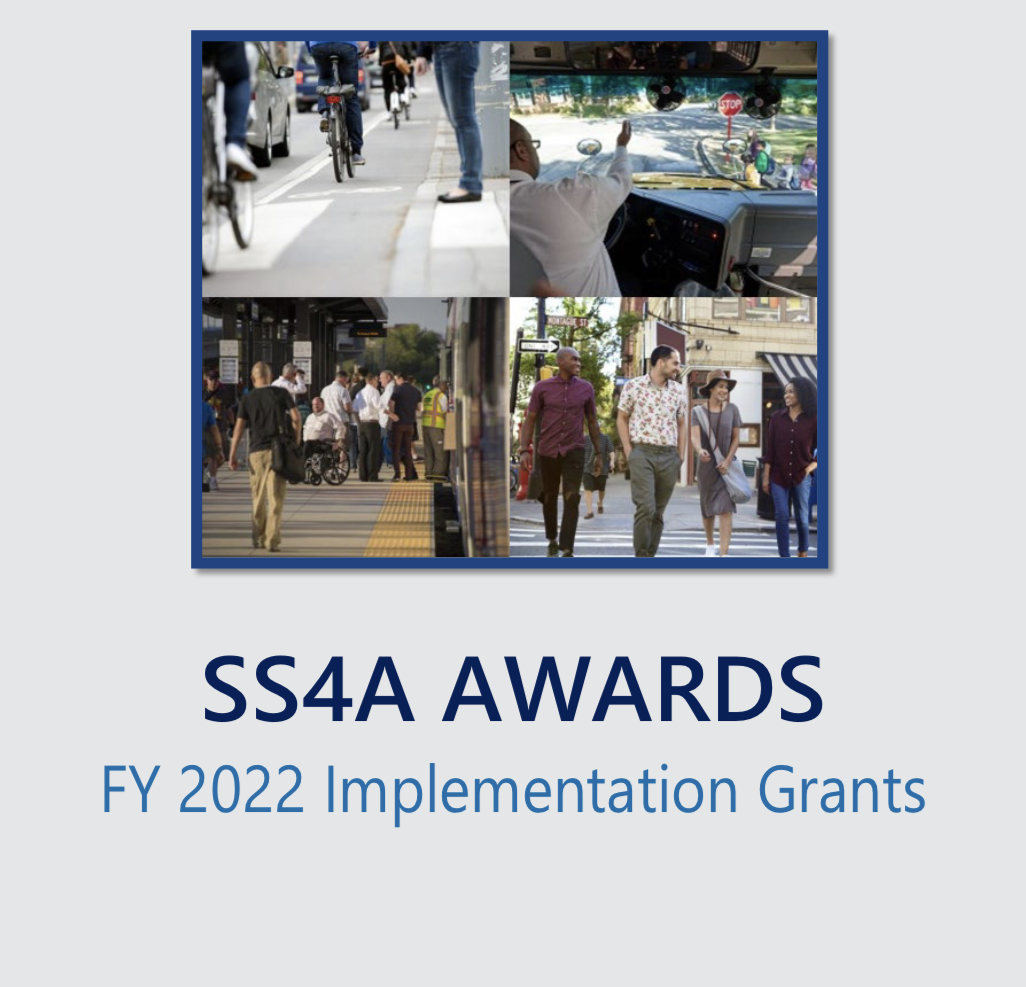
Bipartisan Infrastructure Law funding targets high-crash sites in cities and counties; also supports the U.S. Department of Transportation’s comprehensive strategy to reduce roadway deaths, a crisis claiming more than 40,000 lives each year
WASHINGTON – Today, U.S. Transportation Secretary Pete Buttigieg announced a historic $800 million in grant awards for 510 projects through the new Safe Streets and Roads for All (SS4A) Grant Program, a record amount of funding to improve roads and address traffic fatalities. The competitive grant program, established by President Biden’s historic infrastructure law, provides $5 billion over five years for regional, local, and Tribal initiatives — from redesigned roads to better sidewalks and crosswalks — to prevent deaths and serious injuries on the nation’s roadways. The Department also launched a data visualization tool that shows crash hotspots that can help target needed resources.
The SS4A awards fund improved safety planning for over half the nation’s population and will fundamentally change how roadway safety is addressed in communities through local and regional efforts that are comprehensive and data-driven. This investment comes at an important junction as traffic fatalities reached a 16-year high in 2021, and preliminary data indicates will remain near those levels in 2022 while getting worse for people walking, biking, or rolling as well as incidents involving trucks. In addition, traffic crashes are costly to American society. A new report shows the economic impact of traffic crashes was $340 billion in 2019 alone.
“Every year, crashes cost tens of thousands of American lives and hundreds of billions of dollars to our economy; we face a national emergency on our roadways, and it demands urgent action,” said U.S. Transportation Secretary Pete Buttigieg. “We are proud that these grants will directly support hundreds of communities as they prepare steps that are proven to make roadways safer and save lives.”
The Safe Streets and Roads for All program grants announced today support the Department’s vision of zero roadway deaths and its National Roadway Safety Strategy: a comprehensive approach launched in January 2022 to make our nation’s roadways safer for everyone, including drivers, cyclists, pedestrians,
and emergency and construction workers, by stressing responsible driving, safer roadway designs, appropriate speed-limit setting, and improved post-crash care, among other strategies.
As part of SS4A, the Department is awarding grants for both planning and implementation projects. Action plan grants assist communities that do not currently have a roadway safety plan in place to reduce roadway fatalities, laying the groundwork for a comprehensive set of actions. Implementation grants provide funding for communities to implement strategies and projects that will reduce or eliminate transportation-related fatalities and serious injuries.
The Department is awarding 473 action plan grants and 37 grants for implementation projects in this first round of the program.
Here is a snapshot of the types of communities being funded through these awards:
- $1.52 million for Pima County, Arizona, to develop its Safe Streets for All Action Plan, focused on creating a culture of safety for all residents.
- $12.9 million for Modoc County and Fort Bidwell Tribal Reservation, California, to improve safety along two corridors in rural, disadvantaged communities and Tribal areas by implementing community requests for bicycle lanes, pedestrian crosswalks, speed control, and mobility-assisted support infrastructure.
- $680,000 for the City of San Diego, California, to advance its Safe Streets for All San Diegans proposal, which will build upon the existing safety action plan to develop a speed management plan, pursue quick-build projects, and develop a Slow Streets Program.
- $19.7 million for Hillsborough County, Florida, to implement low-cost and proven safety measures including sidewalks, bicycle lanes and speed management to improve safety for pedestrians, bicyclists, transit users and drivers at approximately 22 locations in the county.
- $10.4 million for Fayette County, Iowa, to address roadway departure crashes along approximately 50 miles of roadway through shoulder widening, rumble strips and other low-cost treatments. Lane departure crashes account for nearly 60% of the fatalities and serious injuries in the area.
- $24.8 million for the City of Detroit, Michigan, to redesign existing transportation infrastructure in high crash areas and places with inadequate pedestrian infrastructure to focus on pedestrian and bicycle safety, and safer speeds for vehicle traffic.
- $4.4 million for the City of Charlotte, North Carolina, to help implement the city’s Vision Zero strategies to reduce risky roadway behavior through infrastructure improvements, with a focus on safer intersections and pedestrian-involved crashes.
- $4.4 million for the City of San Antonio, Texas, to install eight mid-block crossings with pedestrian refuge islands and pedestrian hybrid beacons on Zarzamora Street in the city’s historically underserved Westside. The full list of awards can be viewed HERE. The next funding opportunity of $1.1 billion is expected to be released in April of this year. In addition to SS4A grants, tomorrow the Federal Highways Administration will award a total of $21 million to 70 Tribes to improve road safety on Tribal lands, addressing issues such as roadway departures and the need for better pedestrian crossings. For more information about SS4A, including additional resources and information for interested applicants and stakeholders, click HERE.
The full list of awards can be viewed HERE. The next funding opportunity of $1.1 billion is expected to be released in April of this year. In addition to SS4A grants, tomorrow the Federal Highways Administration will award a total of $21 million to 70 Tribes to improve road safety on Tribal lands, addressing issues such as roadway departures and the need for better pedestrian crossings
To read more about the Department’s National Roadway Safety Strategy, including the Safe Systems Approach, click HERE.
